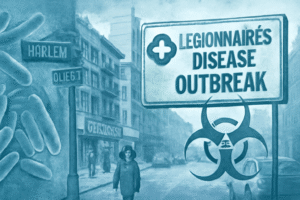The world of psychological thrillers has a new gem: “Speak No Evil”, a film that masterfully weaves tension and discomfort to deliver a chilling experience. Directed by Danish filmmaker Christian Tafdrup, this film explores the depths of human behavior, social norms, and the unsettling fear of losing control. “Speak No Evil” is a slow-burn thriller that uses its pacing, atmosphere, and character dynamics to get under your skin, creating a gripping sense of unease from start to finish.

Plot Overview
“Speak No Evil” tells the story of two families who meet during a vacation in Tuscany. Initially, the encounter between Bjørn, Louise, and their daughter Agnes, with Patrick, Karin, and their son Abel seems serendipitous. What begins as a friendly connection soon devolves into a nightmare when Bjørn’s family is invited to Patrick’s remote countryside home. As the hospitality becomes increasingly uncomfortable, a sense of dread builds, and the seemingly perfect vacation takes a horrifying turn.
What makes “Speak No Evil” unique is its ability to tap into everyday social fears — the fear of offending, the pressure to conform, and the discomfort of being polite in uncomfortable situations. The film’s subtle, escalating tension emerges from these socially awkward moments, which eventually spiral into something much more sinister.
Masterful Use of Atmosphere and Tension
Tafdrup’s direction is critical to the film’s success. He meticulously builds a disturbing atmosphere by balancing moments of normalcy with ever-growing discomfort. The beautiful, serene settings of Tuscany and the countryside home contrast starkly with the psychological horrors unfolding. Each scene leaves the viewer questioning what is real and what is merely a projection of the characters’ fears.
The film’s score adds another layer of unease, heightening tension even in mundane moments. As Bjørn and Louise try to navigate the strange and unsettling behavior of their hosts, the audience is drawn into their growing paranoia. By focusing on their inability to address the increasingly bizarre situations directly, the film mirrors real-life fears of confrontation and social faux pas.
Social Behavior and Compliance
At its core, “Speak No Evil” explores the complexities of human nature and the dark consequences of politeness taken too far. Bjørn and Louise, like many people, are driven by the desire to be courteous and avoid confrontation, even when their instincts tell them otherwise. This societal pressure to be polite, even in the face of danger, is a central theme that resonates with many viewers.
As the story unfolds, the film forces its characters (and the audience) to confront uncomfortable questions: How far would you go to maintain social harmony? When does politeness become a weakness? And, more importantly, how do you react when your worst fears come to life?
This tension between compliance and rebellion plays out in a terrifying manner, making “Speak No Evil” not only a psychological thriller but also a social commentary on human interactions.
Critical Acclaim and Reception
“Speak No Evil” has garnered widespread critical acclaim for its nuanced storytelling, slow-burn tension, and its ability to delve into the psychology of its characters. Many have praised the film for subverting traditional horror and thriller tropes, offering something far more unsettling — a terror rooted in everyday experiences.
Tafdrup’s choice to make the horror deeply psychological, rather than relying on jump scares or gore, has drawn comparisons to other modern horror hits like “The Babadook” and “Hereditary”. However, “Speak No Evil” stands apart in its focus on social dynamics and its dissection of the human psyche. Critics have noted that it’s not just the events in the film that are horrifying, but the way the characters deal with them — or fail to deal with them — that leaves a lasting impact.
A Closer Look at the Performances
The cast delivers stellar performances that are essential to the film’s unsettling nature. Morten Burian as Bjørn and Sidsel Siem Koch as Louise convey the internal struggle between social etiquette and their growing fear. Their nuanced portrayals make the viewer sympathize with their plight, even as they make increasingly questionable decisions.
On the other hand, Fedja van Huêt and Karina Smulders, as the unnerving Patrick and Karin, manage to balance charm with menace, making their interactions all the more disturbing. The understated performances amplify the tension, as their characters’ true intentions remain ambiguous until the film’s shocking climax.
Also Read :Joker 2: Folie à Deux Movie First Reviews
Final Thoughts
“Speak No Evil” is not your typical horror movie. Its scares come not from supernatural entities or serial killers, but from the horrifying potential of everyday social interactions. The film is a cautionary tale about the dangers of suppressing one’s instincts and the dark side of social norms. With its thought-provoking themes, slow-building suspense, and psychological depth, “Speak No Evil” stands as one of the most compelling thrillers in recent years.
For fans of psychological horror and those intrigued by the uncomfortable truths of human behavior, this film is a must-watch.













